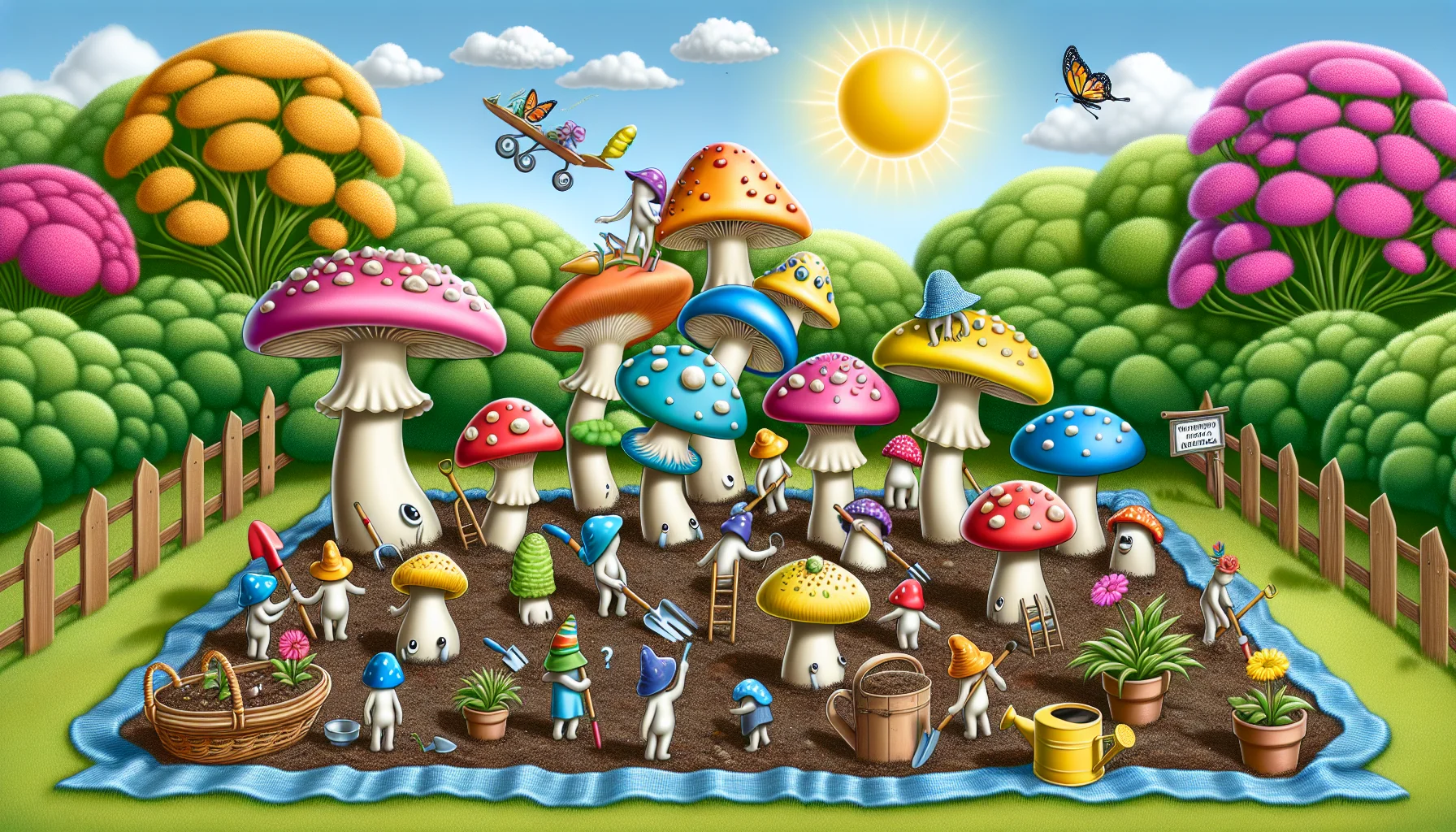Fungus in garden soil pictures Quiz
Test Your Knowledge
Question of
Understanding Fungus in Garden Soil
Recognizing different types of fungus in garden soil is crucial for maintaining plant health. Fungi play a dual role in the garden ecosystem, with some types being beneficial and others harmful to plants. Beneficial fungi can help with nutrient absorption and protect plants from diseases, whereas harmful fungi can cause root rot, wilt, and other plant diseases. Understanding the types of fungus present in your soil helps in implementing the right strategies to nurture plant growth and prevent disease outbreaks, ensuring a thriving garden.
Types of Common Garden Soil Fungus
- Rhizoctonia: This soil fungus affects the roots of plants, causing brown patches and root rot. It's prevalent in warm, moist conditions.
- Pythium: Often responsible for damping-off disease, Pythium affects seedlings, causing them to decay at the soil line, leading to their collapse.
- Phytophthora: Similar to Pythium, Phytophthora causes root rot and is notorious for affecting a wide range of plants, including vegetables and ornamentals. It thrives in overly wet conditions.
- Sclerotinia: Also known as white mold, Sclerotinia affects the plant's base and lower stems, covering them in a white, cottony fungus. It can lead to plant death and is more common in cool, moist environments.
- Verticillium Wilt: This soil-borne fungus enters plants through the roots and blocks the plant's vascular system, causing leaves to wilt and discolor. It affects a wide range of woody and herbaceous plants.
- Fusarium: Fusarium wilt is a soil-borne fungal disease that causes yellowing of the leaves, stunted growth, and eventual death of the plant. It is particularly harmful to tomatoes, peas, and cucumbers.
- Armillaria: Known as oak root fungus, Armillaria causes root rot in many types of trees and shrubs. It's characterized by the presence of honey-colored mushrooms at the base of affected plants.
Identifying Fungus in Garden Soil: A Visual Guide
This section features a collection of images showcasing various types of fungus commonly found in garden soil. By examining these images, gardeners can gain valuable insights into identifying different fungal species. Recognizing these fungi is the first step in addressing and managing potential issues they may cause to plants, ensuring a healthy and thriving garden.
Prevention and Treatment of Soil Fungus
Soil fungus can be a gardener's nightmare, leading to unhealthy plants and diminished yields. However, with the right strategies, it is possible to prevent and treat fungal infections in garden soil. Prevention is always the first line of defense and includes practices such as rotating crops to avoid depleting soil nutrients, ensuring good drainage to prevent waterlogged conditions that fungi thrive in, and using compost to improve soil health. When treating soil fungus, it's essential to remove and dispose of infected plant material promptly. Additionally, natural fungicides like neem oil or a baking soda solution can be effective in controlling fungal growth without harming beneficial soil organisms. Remember, a healthy garden starts with healthy soil, so maintaining a balance of nutrients and moisture is key to preventing fungal infections.
The Role of Fungus in Soil Health
Fungi play a crucial role in maintaining soil health and supporting ecosystems. These organisms contribute significantly to nutrient cycling, breaking down organic matter to release nitrogen, phosphorus, and other essential nutrients that plants need to grow. Moreover, certain fungi form symbiotic relationships with plant roots, known as mycorrhizae, which increase a plant's water and nutrient absorption capabilities, thereby enhancing plant growth and resilience against environmental stresses. The presence of fungi in soil is indispensable for the sustainability of ecosystems, highlighting their importance in both natural and agricultural landscapes.
FAQs on Garden Soil Fungus
| Question | Answer |
|---|---|
| What are common signs of fungus in garden soil? | Common signs include visible mold, a musty smell, discolored plants, stunted plant growth, and wilting plants. |
| How can I identify the type of fungus in my garden soil? | Identification can be challenging and often requires expert analysis. However, you can look for specific signs such as the color of the mold (white, yellow, or black), the presence of mushrooms, or the pattern of plant damage. |
| What causes fungus to grow in garden soil? | Fungus thrives in wet, poorly drained conditions, overmulching, and when plants are overcrowded. It can also be introduced through contaminated soil or tools. |
| How can I prevent fungus from growing in my garden soil? | Ensure proper drainage, avoid overwatering, use clean tools and pots, rotate crops, remove plant debris, and consider using fungicide as a preventive measure. |
| Are there natural treatments for soil fungus? | Yes, options include applying neem oil, baking soda solutions, or diluted vinegar. Improving soil health through composting can also help suppress soil fungus. |
| Should I remove affected plants? | In many cases, removing and destroying affected plants is recommended to prevent the spread of the fungus to healthy plants. |
| Can soil fungus affect human health? | Some soil fungi can cause health problems if inhaled or if they come into contact with the skin. It's important to wear protective gear when dealing with suspected fungal infections in your garden. |












